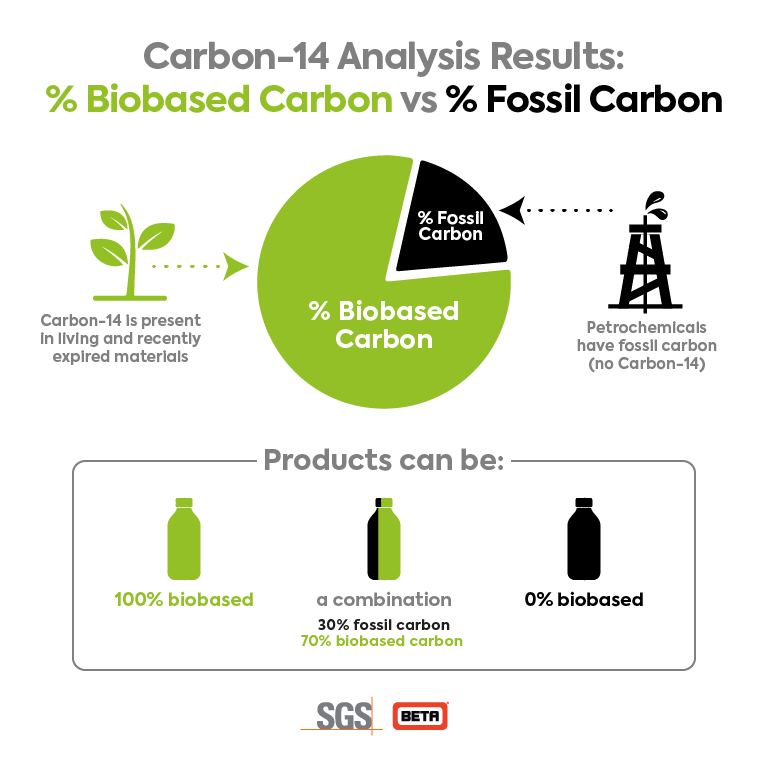Biobased Product Testing
Measuring % Biobased Carbon versus % Fossil Carbon in any product
Request PricingWhat does “biobased” mean?
“Biobased” means containing organic carbon of renewable origin like agricultural, plant, animal, fungi, microorganisms, marine, or forestry materials living in a natural environment in equilibrium with the atmosphere, according to the ASTM D6866 analytical standard.
Biobased materials are derived in whole or in part from biomass resources. Biobased testing by carbon-14 analysis is used to measure the amount of biomass-derived carbon as compared to its total organic carbon (TOC) or total carbon (TC) content. Since carbon-14 is only present in living or recently expired material, Carbon-14 testing using Accelerator Mass Spectrometry (AMS) is the most effective method to determine the amount of biobased carbon as opposed to petroleum-derived carbon in raw materials or any given end product.
Measuring Biobased Carbon
Analytical standard ASTM D6866 distinguishes carbon resulting from contemporary biomass-based inputs from those derived from fossil-based inputs. Biomass contains a well-characterized amount of Carbon-14 that is easily differentiated from other materials such as fossil fuels that do not contain any Carbon-14. Since the amount of Carbon-14 in biomass is known, a percentage of carbon from renewable sources can be calculated easily from the Total Organic Carbon in the sample.

Quantify the Biobased Content of Products by Carbon-14 Analysis to:
- Validate your biobased claims
- Determine the biobased content of products for regulatory or certification purposes
- Use precise % biobased carbon results in your marketing strategies and R&D
Biobased Testing Reporting Standards
- ASTM D6866, ISO 16620-2, EN 16640, and more
- Biobased percentage can be expressed as a fraction of TC or TOC content of the product.
SGS Beta’s Biobased Content Testing Services
- Standard Service – results are reported in 7 business days or less
- Priority Service – 4 business days or less
EXPLORE MORE
Get in touch to find the best solutions to your biobased carbon testing needs.
Contact UsPage last updated: October 2024